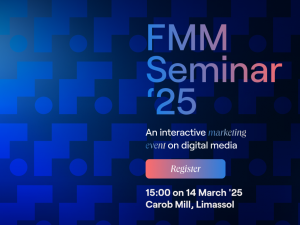In today’s hyper-competitive marketplace, effective advertising isn’t just about getting your message out there; it’s about delivering the right message to the right audience at the right time. With a plethora of advertising options available, choosing the most suitable campaign strategy can significantly impact your ability to achieve your goals, whether it’s increasing brand awareness, generating leads, or driving sales. In this article, we’ll explore various campaign types and their suitability for different objectives.
Display Advertisements vs. Google Keyword Planner
Display advertisements and Google Keyword Planner are two distinct approaches to online advertising, each with its advantages. Display ads, typically banner or image-based ads, offer visual appeal and are effective for brand awareness campaigns. They allow you to reach a broad audience across a vast percentage of websites which have available advertising space. However, their effectiveness relies on eye-catching designs and placements.
On the other hand, Google Keyword Planner focuses on targeting users actively searching for specific keywords related to your product or service. It’s highly effective for lead generation campaigns as it puts your ads directly in front of potential customers when they’re actively seeking information or solutions. By bidding on relevant keywords, you ensure your ads appear prominently in search results, increasing the likelihood of conversions.
Brand Awareness Campaign vs. Lead Gen Campaign
The choice between a brand awareness campaign and a lead generation campaign depends on your immediate objectives. Brand awareness campaigns aim to increase familiarity and recognition of your brand among the target audience. This can be treated as a long term strategy for growing trust in your brand, and thereby supporting other conversion efforts. They’re also ideal for businesses looking to establish themselves in competitive markets or introduce new products or services. Strategies like display ads, social media promotions, and influencer partnerships are effective for brand building.
Lead generation campaigns, on the other hand, can be treated as a more short term strategy for instant information capture. It is a way to initiate direct communication with potential customers and to engage them in your marketing funnel.
Marketing decision makers should not view these two techniques as antagonistic approaches. Instead they complement each other and should be used together as part of a 360 degree marketing strategy. Think of it from the perspective of the lead who has been engaged in your funnel after a lead generation campaign. They are now exposed to your brand, and only if they have trust in your brand will they commit to being a returning, paying customer.
Online Advertising vs. Offline Advertising
The shift towards digital platforms has transformed the advertising landscape, but offline advertising still holds relevance, especially for certain industries or target demographics, particularly in emerging markets. Online advertising offers unparalleled targeting capabilities, real-time analytics, and cost-effectiveness. It allows for precise audience segmentation and dynamic optimization based on performance metrics.
However, offline advertising, including print, radio, and television ads, can still be effective for reaching local or less tech-savvy audiences. Additionally, offline channels offer opportunities for creative storytelling and brand immersion that digital platforms sometimes lack. The key is to strike the right balance between online and offline channels based on your target audience’s preferences and behavior. Taking an example specifically from financial marketing: even if the advertiser is an online, digital brand, the end-user and client ultimately is a human who necessitates trust before parting with their hard-earned money. This trust can often be best built through one-to-one exposure for instance through events or seminars.
Another way to describe the battle between online and offline, can be local versus global. By virtue of the costs associated with offline efforts, they are often smaller scale. With this in mind, it is well worth combining offline and online marketing efforts in order to expose more touch points to the end user, enforcing trust and eventually supporting conversion.
Geofencing vs. Geotargeting
Location-based advertising has become increasingly popular for businesses seeking to deliver relevant messages based on users’ physical proximity. Geotargeting involves targeting users within a specific geographic area, such as a city or zip code. It’s effective for local businesses or those with regional marketing objectives. By tailoring ads to local interests or events, you can increase relevance and engagement.
Geofencing takes location-based targeting a step further by creating virtual boundaries around physical locations, such as stores, events, or neighborhoods. When users enter these predefined areas, they receive targeted ads or notifications on their mobile devices. Geofencing is particularly useful for driving foot traffic to brick-and-mortar locations or promoting time-sensitive offers to nearby consumers.
Native Advertising vs. Sponsored Content
Native advertising and sponsored content both blend seamlessly with the surrounding content, but they serve slightly different purposes. Native advertising involves creating ads that match the form and function of the platform where they’re displayed. They’re designed to be non-disruptive and provide value to the audience while subtly promoting a brand or product. Native ads are effective for increasing brand affinity and engagement.
Sponsored content, on the other hand, involves collaborating with publishers or influencers to create branded content that aligns with their audience’s interests. It’s less overtly promotional and focuses on providing informative or entertaining content that indirectly promotes the brand. Sponsored content is valuable for building credibility, reaching new audiences, and driving traffic to owned media channels.
As with the above, both styles have their place and their value. Marketers should not dismiss one style over the other, but incorporate both styles as part of a 360 degree marketing campaign.
Effective advertising requires careful consideration of campaign objectives, target audience, and available resources. When assessing display advertisements or Google Keyword Planner, brand awareness or lead gen campaigns, online or offline advertising, geofencing or geotargeting, native advertising or sponsored content, remember that the key is in fact to combine strategies. Not one style can work in isolation, they work best together in order to enforce trust and knowledge of your brand. By leveraging the right mix of tactics, you can maximize your advertising impact and achieve sustainable growth for your business.



